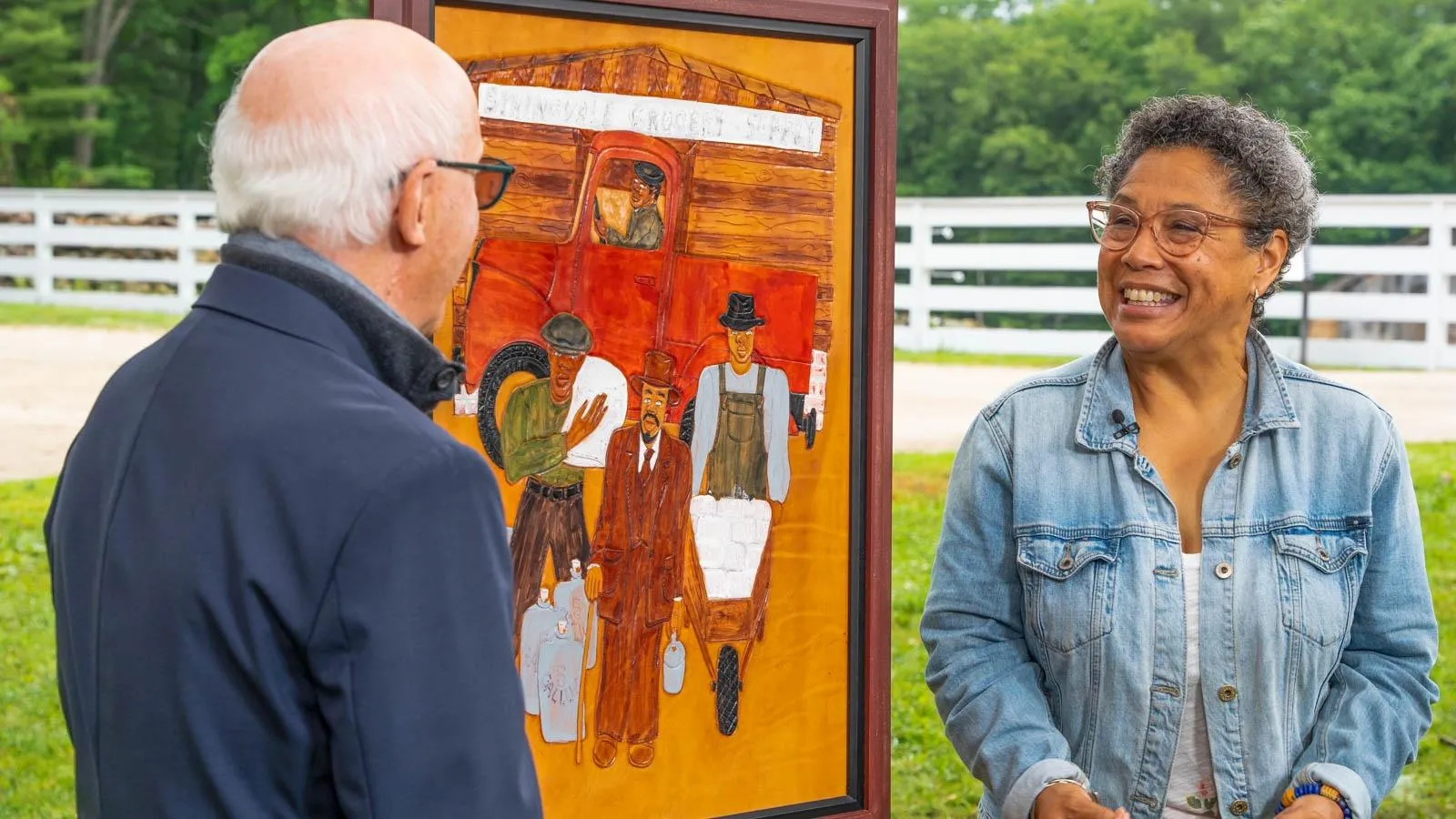Ming Dynasty Gilt-bronze Bodhisattva, ca. 1600
GUEST: It's a statue that was in my family, and, uh, just never was given permission to leave the house. My parents recently passed, last year, 2022, and I have it now at my house. I'm the third generation to have it. My grandfather, he had been in World War I and brought it home from someplace in Asia, I'm not really exactly sure. And it sat on their fireplace mantel, and somebody started calling it "the Becky."
APPRAISER: (laughs): Okay.
GUEST: And so it's, it's the Becky, I have no idea...
APPRAISER: Becky's been in the family... About what year did it...
GUEST: Um... Well, I'm thinking, uh, World War I ended, what, 1918?
APPRAISER: Okay.
GUEST: So it came back just prior to 1918.
APPRAISER: I can confirm that she is indeed Asian-- Chinese, specifically.
GUEST: Ah!
APPRAISER: And it makes me wonder if your grandfather was part of a Marine battalion in China, perhaps. 1918, or around that era, was a pretty tumultuous time in China.
GUEST: Mm-hmm.
APPRAISER: It was a period when the last dynasty had just crumbled unceremoniously. And there were a period of warlords who had taken control of the country in those first few decades of the 20th century.
GUEST: Hm.
APPRAISER: In fact, the, the American Army was there in part to protect our embassy and American interests there. This doesn't date from that era, though. This is actually a relic from the Ming Dynasty. So that is to say, in rough terms...
GUEST: Okay!
APPRAISER: ...this is about 400 to 500 years old.
GUEST: (laughs): Okay!
APPRAISER: It was quite a long dynasty. It spans from 1368 to 1644.
GUEST: Wow.
APPRAISER: And this particular bronze would have been made in the latter part of that dynasty.
GUEST: Oh!
APPRAISER: I think in the late 16th century, early 17th century. Where has Becky lived, or, traditionally, in your parents' home?
GUEST: Now I'm afraid to say. (laughing)
APPRAISER: Please, do tell.
GUEST: Yeah, it's, I mean, it lived, uh, in a bookcase kind of thing. I guess my grandmother used to hide money in it or something?
APPRAISER: (laughs): Okay.
GUEST: And so there was a family story about how, if they wanted to go someplace, she would stuff money up in there, and she'd say, "Well, let's go ask Becky." And she would pick the thing up and see what money was in there so they could go do whatever it was.
APPRAISER: The method of casting leaves this hollow cavity there, so one could stuff money in there.
GUEST: (laughing)
APPRAISER: Or, originally...
GUEST: Yeah?
APPRAISER: ...stuff prayer scrolls on the inside.
GUEST: Oh, my gosh.
APPRAISER: This is something that would have been made to go into a shrine. This particular bodhisattva is a guardian figure.
GUEST: Oh.
APPRAISER: And it was one of several guardians that would have been cast in this proportion and put into a shrine or put into a temple. So when this was acquired, let's say around 1918 or so...
GUEST: Yeah.
APPRAISER: Again, this is a nation in a rebuilding phase.
GUEST: Okay.
APPRAISER: And objects like this were, were for sale. This would have been originally a very sacred object, protected, left in a shrine.
GUEST: Wow. Wow.
APPRAISER: And in this warlord period, some of what was sacred had to be converted into cash.
GUEST: Okay.
APPRAISER: And so it was common for visit, visiting dignitaries, visiting tourists, in some cases, even soldiers, to acquire object, objects like this and bring them back. In China, throughout the Ming Dynasty, Buddhism was sort of spreading. What was already in place in terms of spiritual traditions was the tradition of Taoism.
GUEST: Mm-hmm.
APPRAISER: And what's particularly interesting about this figure is that it's a Buddhist deva called Marici, who has a Taoist counterpart called Doumu. So in the Ming Dynasty, there was a generally harmonious meeting of these two spiritual traditions. I can point to a few of these attributes in the hands.
GUEST: Mm-hmm.
APPRAISER: The top one being the Chintamani, this wish-granting jewel, which is rooted in the Hindu tradition, and then through Buddhism. And then this item, which is called a ruyi scepter...
GUEST: Mm-hmm.
APPRAISER: It's missing the head right there...
GUEST: Oh.
APPRAISER: ...it's something that actually corresponds more to Chinese folk traditions and is a little more on the Taoist side. It's really chock-full of symbolism.
GUEST: Uh-huh.
APPRAISER: The many heads represent omniscience, generally speaking. The, the, the multiple arms represent omnipotence. In, in terms of condition, there are some things that were once present in these hands that are, that are gone.
GUEST: Uh-huh. Uh-huh.
APPRAISER: There are traces of some polychrome decoration, but what, what I think is, is really most striking is this beautiful gilding on the faces. This would have been gilt in, in its entirety originally.
GUEST: Oh! Okay.
APPRAISER: And where it's been held, where it's been moved around, the gilding is, is long gone. It's a little worse for wear, but I think on the whole...
GUEST: Yeah.
APPRAISER: ...it presents beautifully. It's really a terrific Buddhist and Taoist icon. It's so distinctly Chinese.
GUEST: Wow!
APPRAISER: Becky...
GUEST: Yes?
APPRAISER: ...or Marici, or Doumu...
GUEST: Okay, uh-huh.
APPRAISER: ...or however we'd like to, to, to call this figure, fits into a marketplace right now that's very strong. And I think at auction today, I'd put an auction estimate of $10,000 to $15,000.
GUEST: (laughs): Okay, wow, all right. That's amazing-- I had no idea, okay. (laughs) That's incredible, thank you. Jeez.
APPRAISER: You're very welcome.
GUEST: (laughs): Glad you could talk to Becky. (laughs): Thank you so much.
APPRAISER: You're very, very welcome.
GUEST: Holy smokes, yeah.

$10,000 - $15,000 Auction
Photos

Featured In

episode
Old Sturbridge Village, Hour 2
Old Sturbridge Village brings in new remarkable finds. One is $100,000 to $125,000!
Cultural Art & Objects

appraisal

appraisal

appraisal

appraisal
Understanding Our Appraisals
Placeholder





